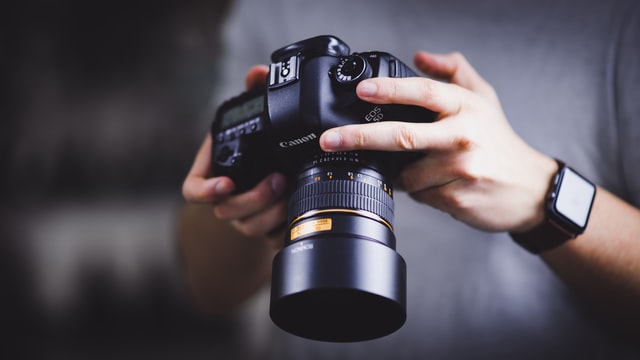Welcome to the first of our new ongoing series “Answering Photography Questions”.
Our first question comes to us from “Robert” in NYC.
Hi LPS team!
I’m new to photography, I only just got started with it in the last year. My first camera was a Sony bridge camera, and then upgraded to the Canon 1800D. I currently using the included 18-55mm lens, a 50mm f/1.8 and a Tamron 150-600.
I really would like to upgrade again. I shoot wildlife (birds) and my friends helicopters, but recently got interested in landscape and architectural photography.
I found the crop sensor made it harder to capture some building shots because buildings are so big.
I have read a lot about full frame cameras and the increased light that reaches the sensor, and then the increased control you get, plus the improved ISO performance.
I have been looking at the R5 – as great as it looks, it’s very expensive, and even after purchasing, the memory cards are expensive. Also, I would be running it with the EF adaptor and the lens noted above. It seems a lot of coin for an amateur hobby. I don’t think the R6 would give enough pixels when cropping in on wildlife images.
I had also looked at the 6Dmkii – but have read it might not be the best for wildlife.
I guess you could say I’m looking for a camera that can perform in all types of photography.
Would anyone have any thoughts or advice?
Thank you
Well Robert, I just want to thank you for visiting Learn Photography Skills and trusting us to answer your questions!
You said that you have the 1800D, well, I don’t know what camera that is and neither does Google, lol. You probably meant the Canon 800D so we’ll go forward assuming that is the case.
The Canon 800D is a good camera, it has the same sensor in it as the Canon 80D, and 77D, which were Canon’s top of the line APS-C sensor cameras just a few years ago.
The Canon 77D was my main camera from 2017-2019 before I upgraded to the 6D mk II.
You know what? I really liked the 77D, it wasn’t bad at all. I got a lot of cool pictures with it, and I even shot a wedding with it, not my greatest work, but I did it!
Interestingly the 800D, 77D, and 80D all have pretty much the same technical capabilities. As I mentioned they all share the same sensor and they all have the same 45pt AF system in mirror mode, and DPAF in mirrorless mode.
It looks like you made a pretty smart purchase to start off there as the 800D is giving you 90% of the other two cameras for about 75% of the price.
Naturally you’re wondering about Full Frame cameras, it’s common for beginners to question their gear when attempting to figure out how to perform certain photography tasks. The truth is, you’re in a bit of a weird spot at the moment with an EF mount APS-C camera and at least 1 APS-C lens.
The 18-55mm lens you’re hoping to use on a mirrorless RF camera is designed solely for APS-C. That means that the image circle from the 18-55mm lens won’t even cover the full sensor on any of the Full Frame cameras you’re thinking about buying including the EOS 6D II.
The reason your 18-55mm lens isn’t working for your architectural/building photography is because the 18-55mm rating is a Full Frame designation. In the world of photography everything is related to FF for some reason. This is a pretty confusing situation, but it is what it is. In order to convert those full frame focal length designations to APS-C crop format you have to perform a crop factor calculation.
It turns out that your 18-55mm lens covers the equivalent of 29-89mm on your APS-C camera. It’s quite a bit narrower than you would want for indoor architectural shots. 24mm is really the minimum for architecture and wider than that is generally preferable. The 18-55mm lens you have is a “standard zoom” on an APS-C camera. Standard simply refers to covering the “standard focal lengths”, of wide, normal, and telephoto. Typically, 24mm is seen as “wide”, 50mm is “normal” and 70mm is “telephoto”.
The most popular lens for architectural/building photography is a UWA or Ultra-Wide Angle zoom. For this purpose, Canon makes 2 lenses specifically for your camera, one is the very affordable EF-S 10-18mm f/4.5-5.6 IS STM lens which is around $300 USD.
The other lens is the slightly wider range and much higher quality EF-S 10-22mm f/3.5-4.5 which costs about $650 USD.
Buying one of those two lenses is the easiest and cheapest way for you to solve your problem. The rest of your kit you can keep the same and just continue to enjoy taking pictures!
As much as I would love to say “go out and buy a Full Frame camera” it just isn’t the answer for you. You’ve made it clear you want to limit your spending, which is fair if you’re not a professional. I would give the 10-18mm a chance, if you don’t like it, return it and try the 10-22mm which is generally regarded a near pro quality lens while the 10-18mm is decidedly a “budget” quality piece. Remember to stop down to f/10 or so when testing the lenses for indoor shooting and always shoot on a tripod for architectural photography.
If any commenters have advice for “Robert” feel free to post in the comments below!


4 Comments
Hello sir, I have a Canon PowerShot HS SX. I am new to photography. How do I shoot videos and still shots?
Hello Kalyansundaram. Thanks for posting your question, if you would like to know basic things such as how to take a picture with your camera, I suggest viewing the manual for your camera online. But, with a camera like this I can give you a guess: First, turn the camera on using the power switch. Second, set the camera’s mode to P. It is usually a green letter P on a small dial on top of the camera. Third, while holding the camera in your right hand you’ll find the shutter button on the top of the grip area near your index finger (the first finger by your thumb). Right within reach should be a larger round button, press this button to take a picture. Hope it helps!
Hello sir, I have a Canon PowerShot HS SX. I am new to photography. How do I shoot videos and still shots?
Hello Kalyansundaram. Thanks for posting your question, if you would like to know basic things such as how to take a picture with your camera, I suggest viewing the manual for your camera online. But, with a camera like this I can give you a guess: First, turn the camera on using the power switch. Second, set the camera’s mode to P. It is usually a green letter P on a small dial on top of the camera. Third, while holding the camera in your right hand you’ll find the shutter button on the top of the grip area near your index finger (the first finger by your thumb). Right within reach should be a larger round button, press this button to take a picture. Hope it helps!